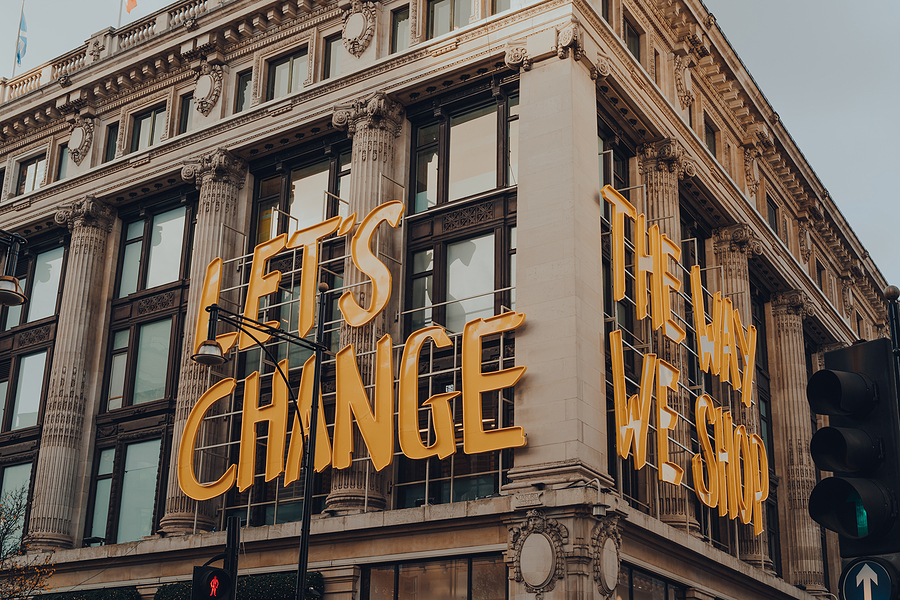
Seven Million Reasons Why Strategy Eludes the World’s Most Expensive Ad Spend
February 23rd, 2024 Posted by Emergent Behavioral psychology, Brand differentiation, brand messaging, branded content, Consumer insight, Digital disruption, Emotional relevance, Mission, resonance, storytelling 0 comments on “Seven Million Reasons Why Strategy Eludes the World’s Most Expensive Ad Spend”Important to respect the human sitting on other side of the screen…
The Super Bowl attracted a bit north of 123 million viewers, the greatest aggregation of human eyeballs in one place at one time, and thus the reason why 53 TV spots aired at a $7 million per 30-seconds clip. It is an unprecedented event where advertising is as much of a contact sport as the action on the football field. People tune in specifically to consume the ads — what an amazing impact opportunity-in-the-waiting, but nevertheless not often optimized largely due to an absence of sound strategy on how people make decisions and take action.
- David Ogilvy once famously remarked that if attention was all that mattered then you could put a ‘gorilla in a jockstrap’ in an ad. Yet that’s not what drives real effectiveness. He knew it and built a global agency powerhouse on that model of respect for consumer insights, perhaps now forgotten in the age of ‘can you top this’ over-reach with the display of so many digital bells and whistles.
Moreover, the Super Bowl ad is just the tip of the spending iceberg when looking at the total costs of gargantuan celebrity contact fees, massive production budgets and the veritable supermarket of extensions in packaging, retail tie-ins and social media on and off ramps.
Yet in astounding fashion, sound strategy is mostly absent from this festival of short form cinematic spectacle. The temptation to pursue attention at the expense of real relevance is just too great. In circa 2024, the ad party turned into a conspicuous mish mash of celebrity faces, much like excessive name-dropping at a Hollywood cocktail party. It’s no secret that all-too often the celebrity brand will outshine the product brand. So why does it go this way?
Guess what, emotion drives behavior
The neocortex area of the human brain governs our decisions and the actions we take. As much as we would all prefer to believe that people are logical beings who make decisions based on facts and information, instead we respond to emotional cues – how we feel in the presence of a brand. Yet too few of the ads we saw were designed with intention to drive for that kind of authentic connectivity. Given the huge one-shot spend level, you’d think it would be different.
Yes, a different approach is needed
In 2023’s super game, the highest rated commercial was a total outlier from a small pet food company called The Farmer’s Dog. This high-level and instructive achievement in strategic brand communication was the polar-opposite of the celebrity dragon-riding special effects we witnessed this year. Here Farmer’s Dog offered a story well-told that traced the poignant and touching relationship between a dog and young girl owner, charting the course of their life’s journey together. Not a word was spoken. No celebrity cameo. No green screen special effects wizardry.
It was an emotional, heartfelt, memorable celebration of the incredibly powerful and important relationship between a person and their dog. There was no recitation of production formulation features or superior ingredient claims. The brand wasn’t shouted in every frame. It didn’t need any egregious self-promotion to get the message across. It was supremely effective because people left it with an emotional connection. We all recognize that unique bond between pet parent and furry family member. The pet food existed as an enabler of pet wellbeing on life’s pathway.
Desperately seeking attention
Creating content for an engaged audience is just different than trying to capture an audience with some wild content. Too many brands seeking attention at the expense of sound strategy. The truth is human beings are feeling creatures who think not thinking creatures who feel. If you want to manage perceptions of your brand, and yes that should be a goal, then you really need to manage emotions. If your objective is to assure communication is remembered, to have impact, then emotional gravitas is paramount.
Proper use of the world’s greatest ad venue to deliver boldness
Way back in 1984, Apple used the setting to unveil their new Macintosh computer with a historic ad that captivated the world’s attention. It was a bold and also controversial strike, so much so the Apple Board was wary of showing it right up to the telecast. It aired and both ad history and the upstart Apple brand was made. It was a powerful message about democratizing the power of creativity and expression in the hands or everyone – railing against the dictates of the “establishment.”
Speaking of bold, what about sustainability and ESG in the midst of uncertainty?
Nearly every major brand in the food, beverage and lifestyle worlds is working hard to address their sustainability bona fides and emissions performance. It is by definition an opportunity for a brand to focus on higher purpose, mission, reputation and value beyond transactional thinking. Yet we don’t see that showcased here. We have entered a new era where brands are expected to have a point of view, a belief system and to be standard bearers of change. We remain hopeful that someday soon, a progressive brand will take advantage of the super venue to convey what people seek – a healthier, safer planet.
Guidance going forward
Put the consumer at the center of your planning and thinking and work backwards from there. Recognize that shameless self-promotion makes a brand the hero of any story told, and by doing so casts the brand in direct competition with the consumer who sees themselves each and every day as the hero of their life’s journey. Celebrate your consumer and their wishes, needs and aspirations like Farmer’s Dog did with such excellence. This is sound strategy. Your brand deserves this approach to spending effectiveness and outcomes, whether at the Super Bowl or in routine quarterly brand and business support.
If this post gets you thinking about how best to optimize and improve your planning for improved communications effectiveness, use the email link below to ask questions and start and informal conversation.
Looking for more food for thought? Subscribe to the Emerging Trends Report.
Bob Wheatley is the CEO of Chicago-based Emergent, The Healthy Living Agency. Traditional brand marketing often sidesteps more human qualities that can help consumers form an emotional bond. Yet brands yearn for authentic engagement, trust and a lasting relationship with their customers. Emergent helps brands erase ineffective self-promotion and replace it with clarity, honesty and deeper meaning in their customer relationships and communication. For more information, contact [email protected] and follow on Twitter @BobWheatley.




